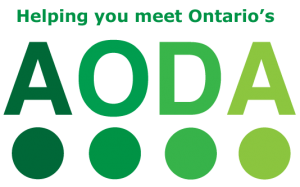Software in the area of classroom management has evolved during the last twenty years, especially with computers becoming available for classroom use. Here are examples of software used in schools to monitor computer-based activities.
GSuite for Education
More and more digital learning tools are being offered through school boards. A popular classroom management tool offered by some boards is GSuite for Education. GSuite tools help facilitate tracking of collaborative learning, submission of assignments, creation of accessible and alternative resources, and communication with teachers and other students.
LanSchool Classroom Management and Monitoring Software
Computers are amazing educational tools, but they can also be a distraction. LanSchool improves learning in a lab, laptop cart, or 1:1 environment. With LanSchool, the teacher can remove distractions, demonstrate skills, monitor, and assess student progress. LanSchool is a cross-platform program and works on PCs, Macs, thin clients, and even iPads.
NetOp School
NetOp School enables a teacher, or corporate instructor, to increase student time-on-task by being able to monitor their activity on the computer while they work. Teachers can also enhance classroom interactivity with NetOp by broadcasting live demo screens to students, marking up the featured screen to highlight a lesson, and creating monitored chat rooms or allowing students to send you private questions via an instant message button located on the student’s computer.
NetSupport School
NetSupport School has the ability to display a screen on the students’ workstation or view up to sixteen screens on the teacher’s computer [RS1] simultaneously. This software includes a full testing module, allowing for the design and delivery of customized tests together with full application and web control modules. This ensures that students only use approved applications on their workstations and only visit approved websites.
AB Tutor Control
AB Tutor Control is a computer and internet monitoring software that provides teachers, trainers, and administrators with a teaching tool for networked classrooms and labs, allowing them to simply and effectively control, manage, monitor, demonstrate, support, and collaborate with students.
How It Relates to the AODA legislation
The Software for Classroom Management section relates to the following sections of the Accessibility for Ontarians with Disabilities Act (AODA) Integrated Accessibility Regulation:
Accessible Formats and Communication Supports
Training on Accessible Course Delivery and Instruction
AODA Significance:
- The Software for Classroom Management section describes how educators might utilize inclusive technologies to teach, communicate, and share information.
- People interact, learn, and communicate in diverse ways. Learning opportunities are increased when flexible methods of engaging with learning materials are provided. Considering how people communicate is important for an exchange of knowledge to occur. Alternative formats take into account different ways of exchanging information.
- The AODA legislates that educators, teachers, and staff are to learn about accessible course delivery and instruction and to be skilled at interacting and communicating with people with disabilities who may use alternative formats.
Additional Resources:
To learn ways to innovate, develop, and design for accessibility, visit OCAD University’s Inclusive Design Research Centre website.
To learn how this section relates to the core principles of the AODA Customer Service regulation, visit the AODA page on SNOW.
